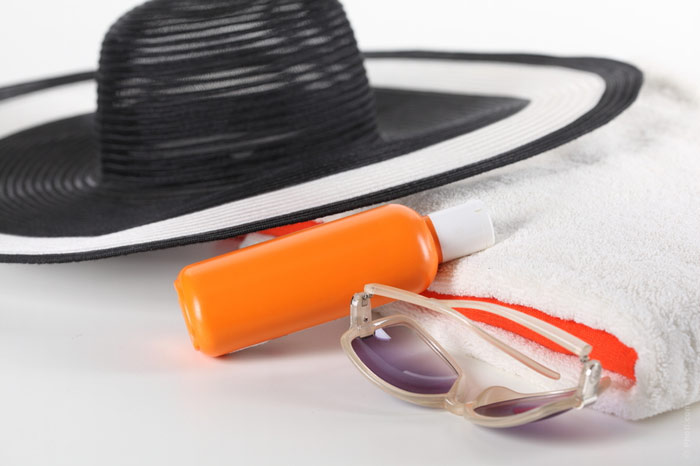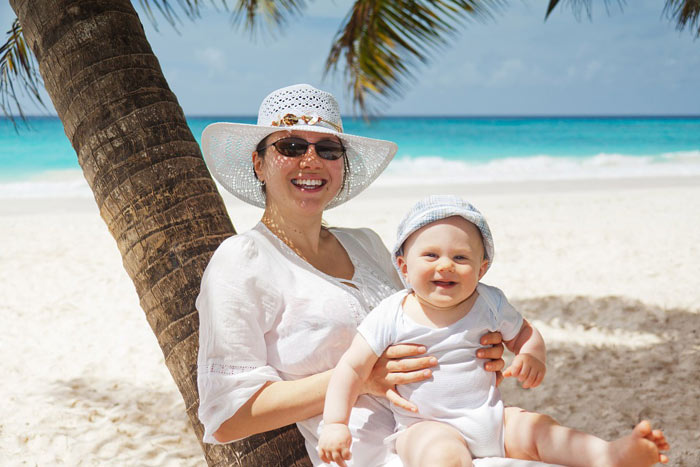
It looks as though the summer has been extremely hot in all regions. The heat is so severe that you can hardly get out of the house. If you need to go out, you should be covered with sunscreen from head to toe. By the way, did you know that sunscreen products should be used not only on the beach but also in the city? Planning a vacation, you need to choose the right sunscreen instead of grabbing the first bottle you see. You don’t want to bring sunburns as a souvenir, do you?
Everything must be approached wisely. The choice of skin care cosmetics is no exception. After all, your health can largely depend on it. Especially when it comes to sunscreens. Some can seriously damage the skin. Do you get sunburns on the beach, despite the thick sunscreen layer on your skin? Have you noticed a strange rash? These are true signs of allergy and the improperly selected sun protection. Making the right choice is not difficult. Just read the composition carefully and follow this simple instruction.
1. Read the composition

And understand it. This rule is true for any cosmetic products. The same concerns food as well. As for sunscreens, avoid creams that contain oxybenzone, vitamin A, or an insect repellent. Instead, look for zinc, titanium dioxide, avobenzone, and mexoryl (Mexoryl SX) in the ingredients list. They provide additional protection against radiation without damaging the skin.
2. Do not pursue the highest SPF
It seems that the higher the sun protection factor (SPF) is, the better. Still, many dermatologists agree that the numbers on the packages are greatly exaggerated. It’s not necessary to look for SPF +50. The +30 indicator is quite enough even for the beach. Moreover, you will hardly notice the difference because there can be no difference as such.
3. Do not forget to refresh the sunscreen layer

Even a resistant cream can be washed off with water and wiped with a towel or will remain on your beach bedding. So do not forget to renew the sunscreen layer on your skin as often as possible. At least each time after you swim and wipe your body.
4. Spray is not the only remedy
As marketing research shows, sunscreens in the form of a spray are the sales leaders. It is not surprising as they are much easier and faster to apply. However, the thickness of the protective layer is affected by such application. Therefore, try to always combine the spray with a classic cream or lotion. For example, use it to refresh a denser product. Or use a denser sunscreen on the most affected areas – on the nose, cheeks, shoulders, or knees. After all, everyone wants an even tan and not only some red spots.
5. Avoid vitamin A in the composition
Although vitamin A has long been loved by cosmetologists and cosmetics manufacturers for its anti-aging properties, recent studies have alarmed all fans of this component. It turns out that vitamin A can provoke the development of tumors when combined with prolonged exposure to sunlight. Therefore, if you find a retinyl palmitate (another name for vitamin A) in a lotion or cream composition, stay away from it. The same applies to other cosmetic products, including decorative cosmetics.
6. Do not forget about children

Dermatologists recommend using children’s sunscreen products for the baby’s sensitive skin. The day before going to the beach you should test the kid for an allergic reaction: apply a little sunscreen to the child’s elbow and see if redness or other anxiety symptoms appear.
7. Take care of men
According to the Environmental Working Group research, 78% of women use sunscreens on the beach, whereas only 34% of men do. So do not forget to apply some sunscreen to the back and nose of your soulmate – after all, he can “burn out” not only at work. Of course, you need to accentuate that applying sunscreen will not diminish his manliness!
8. Use other means of sun protection
Do not forget about the cream, but do not rely only on it. Hats, big glasses, and umbrellas still remain reliable ways to prevent sunburns. Do not ignore sun protective clothing for swimming, such as long-sleeve wetsuits like those used by surfers. It is much more convenient than a cream, especially if you are alone on the beach and you do not have anyone to apply it to your back.






